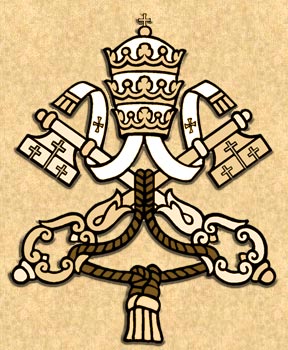Margaret's ancestry tells a lot about why she grew up in Hungary, returned to England, and how she came to be Queen of Scotland.
Her father, Edward Atheling was the Saxon heir to the throne of England when the Danes took over the country for a time. This put Edward in danger, and so he was forced to find safety at the court of King Andrew in Hungary. At that time, the Hungarian court was a place that fostered Christianity and welcomed royal exiles. There, Edward Atheling found both refuge and a pious wife, Agatha, who was a German princess. There, too, Edward and Agatha started a family. Their first child was Margaret, born in 1045, followed by Christina and Edgar. In Hungary, Margaret was trained to be a princess by her parents and taught to be a devout Christian by Benedictine nuns. She absorbed the lessons well.
Back in England, the Saxons threw out the Danes and Edward the Confessor became king in 1042. He had no children, so in 1054 he asked his nephew Edward Atheling to return with his family to England and prepare to become king when the time came.
Edward Atheling, Agatha, and their children arrived in England around 1057. Before the end of the year, Edward Atheling was dead, never having met his uncle King Edward the Confessor. According to the writer of the Anglo-Saxon Chronicles, Edward Atheling's death made William the Conqueror's Norman Conquest at the Battle of Hastings, and thus the end of Anglo-Saxon England, inevitable. When Edward the Confessor died in 1066, no one of the Saxon royal house remained to become a strong king.
Once again, Margaret's family had to seek refuge. This time, they found it in Scotland, landing at a spot known since then as St. Margaret's Hope.
The Scottish nobles were an unruly bunch, staging frequent raids into the north of England and quarreling among themselves. The young prince Malcolm, who was to become Margaret's husband, was still a child when his father, King Duncan, was killed by Macbeth. It was not until 1054 that Macbeth was driven out and Malcolm established on the throne of Scotland, as readers of Shakespeare's Macbeth will remember.
When Margaret and her family arrived in his land in 1070, King Malcolm greeted them graciously. Margaret had hoped to become a nun and devote her life to the Church, but Malcolm had other plans. He courted her and she, aware of the power for good that the position of Queen of Scotland could give her, agreed to his proposal of marriage. They were married when Margaret was 24 and Malcolm almost 40. Her first act as Queen was to build a great church dedicated to the Holy Trinity at Dunfermline, the site of their wedding.
or 23 years, Malcolm and Margaret ruled Scotland. Margaret was deeply pious and taught Malcolm the ways of prayer and charity. His political preoccupation continued to be invading England, while she, with his consent built schools, established abbeys, and personally cared for pilgrims and the poor by distributing money for food with her own hands. The coins shown in her hand on our statue of St. Margaret symbolize her very great charity.
The book Margaret is holding on our statue represents one of her most treasured possessions -- a Gospel Book ornamented with gold and precious jewels. This book was said to have been dropped in a river and, when rediscovered much later, showed no damage. Its miraculous preservation was attributed to Margaret's holiness. Such a Gospel book that once belonged to Queen Margaret is now in the Bodleian Library at Oxford University.
Margaret saw that the Church in Scotland had fallen into lax ways. As Queen, she prompted the Scottish clergy to hold church councils to bring Scottish practices into line with disciplines of Rome. With her encouragement, abuses were curtailed, the proper ritual of the Mass reestablished, and the rules for Lenten fasting and Easter Communion restored. Her zeal inspired a return to the religious and ecclesiastical observances that were common practice in England and on the continent of Europe, both places where she had lived.
As a Christian wife and mother, Margaret trained her eight children in the ways of God. Her daughter Edith married Henry I and became known as Good Queen Maud of England for her holy ways. Her son Ethelred became an abbot. As kings of Scotland, her three youngest sons "carried on her policies, inaugurating a golden age for Scotland that lasted 200 years" (Joanne Turpin, Women in Church History). The youngest of these sons of Margaret and Malcolm, King David of Scotland, was also canonized as a saint.
It was during one of his invasions of England that Malcolm and his oldest son Edward were killed in battle in November of 1093. Margaret had been sick for some time, and she died just a few days after her husband and son. She was canonized as Saint Margaret in 1250, and her feast day is the date of her death, November 16.
Margaret's second daughter Mary asked Margaret's confessor and friend Turgot to prepare a biography of her mother, in which he wrote: "Queen Margaret was a virtuous woman, and in the sight of God she showed herself to be a pearl, precious in faith and works."
Visiting Holy Rosary Cathedral in Toledo
3 weeks ago









No comments:
Post a Comment